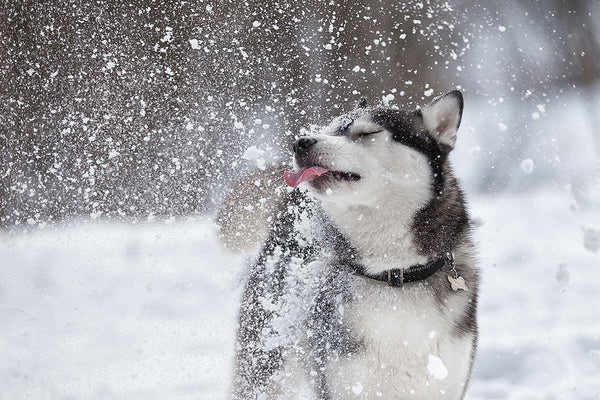Do Dogs Like Snow? 7 Surprising Reasons They Love Winter (2025 Vet Guide)

Do Dogs Like Snow? 7 Surprising Reasons They Love Winter (2025 Vet Guide)
Snow transforms the world into a playground for dogs, but their enthusiasm for winter adventures often leaves owners wondering: Do dogs really enjoy snow? Let’s explore the science behind their snowy antics and how to keep them safe.
Why Dogs Go Crazy for Snow: 7 Science-Backed Reasons
1. Snow Is a Sensory Playground
Dogs experience snow through heightened senses. The cold texture stimulates their paws, while fresh snow masks familiar scents, triggering their natural curiosity to dig and explore Breeds like Huskies and Malamutes even have “snow nose” genetics that enhance their winter adaptability
2. Instinctive Hunting Behavior
Snow buries small animals’ tracks, activating dogs’ primal hunting instincts. They’ll dig furiously to uncover hidden critters or buried toys, mimicking wild canid behaviors
3. Thermal Comfort for Cold-Loving Breeds
Thick-coated breeds like German Shepherds and Newfoundlands thrive in cold weather. Their double-layered fur traps body heat, making snow play a natural high
4. Snow as a Natural Stress Reliever
Rolling in snow releases endorphins, similar to humans enjoying a spa day. The cold sensation also soothes joint inflammation in older dogs
5. Social Bonding Opportunities
Snowy walks and games like snowball fetch strengthen the human-dog bond. Dogs interpret shared play as pack collaboration, deepening trust
6. Mental Stimulation
Navigating snowdrifts and solving “snow mazes” challenges their problem-solving skills, preventing boredom-induced destructive behaviors
7. Taste of Winter
Many dogs lick or eat snow to hydrate. While safe in moderation, monitor intake to avoid stomach upset from contaminated snow
Winter Safety: Protect Your Snow-Loving Dog
❄️ Paw Care Essentials
- Booties & Balms: Use waterproof boots to shield paws from ice-melting salts (toxic if ingested). Apply vet-approved paw balm to prevent cracks.
- Post-Walk Routine: Rinse paws with warm water to remove chemicals and ice balls.
❄️ Frostbite Prevention
- Risk Zones: Ears, tails, and paw pads are most vulnerable below 32°F (0°C).
- Signs to Watch: Pale/gray skin, blisters, or reluctance to walk.
❄️ Warmth Strategies
- Coats for Short-Haired Breeds: Pit Bulls and Chihuahuas need insulated jackets for outdoor time
- Shelter Upgrades: Outdoor dogs require straw-insulated houses (never hay) facing away from wind.
❄️ Hidden Winter Dangers
- Antifreeze Poisoning: Even a teaspoon of ethylene glycol can be fatal. Watch for vomiting, seizures, and immediate vet care.
- Hypothermia Risks: Limit playtime in sub-20°F (-6°C) weather. Smaller dogs and puppies chill faster.
5 Fun Snow Activities (Vet-Approved!)
- Snowball Fetch: Toss snowballs or use glow-in-the-dark toys for visibility.
- Snow Maze Building: Dig tunnels for mental stimulation.
- Sledding Companions: Secure dogs with harnesses on gentle slopes.
- Snow Treat Hunts: Bury frozen blueberries or kibble for scent games.
- Snow Angel Challenge: Lie down and let your dog mimic your movements.
FAQ: What Dog Owners Ask
Q: Can dogs stay outside in snow all day?
A: No! Even cold-adapted breeds need warm shelter and limited exposure
Q: Why do Huskies sleep in snow?
A: Their dense undercoat insulates against cold ground, but monitor for shivering
Q: Is snow safer than ice melt?
A: Yes—but avoid yellow snow (may contain toxins) and roads treated with salts
Key Takeaways
While many dogs adore snow, their safety hinges on breed-specific needs and owner vigilance. By combining winter fun with science-backed precautions, you’ll ensure every snow day is a tail-wagging success.
